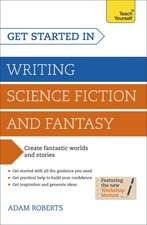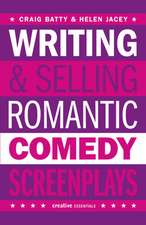Composing Media Composing Embodiment
Editat de Kristin L. Arola, Anne Wysockien Limba Engleză Paperback – 31 mar 2012 – vârsta ani
“What any body is—and is able to do—cannot be disentangled from the media we use to consume and produce texts.” ---from the Introduction.
Kristin Arola and Anne Wysocki argue that composing in new media is composing the body—is embodiment. In Composing (Media) = Composing (Embodiment), they havebrought together a powerful set of essays that agree on the need for compositionists—and their students—to engage with a wide range of new media texts. These chapters explore how texts of all varieties mediate and thereby contribute to the human experiences of communication, of self, the body, and composing. Sample assignments and activities exemplify how this exploration might proceed in the writing classroom.
Contributors here articulate ways to understand how writing enables the experience of our bodies as selves, and at the same time to see the work of (our) writing in mediating selves to make them accessible to institutional perceptions and constraints. These writers argue that what a body does, and can do, cannot be disentangled from the media we use, nor from the times and cultures and technologies with which we engage.
To the discipline of composition, this is an important discussion because it clarifies the impact/s of literacy on citizens, freedoms, and societies. To the classroom, it is important because it helps compositionists to support their students as they enact, learn, and reflect upon their own embodied and embodying writing.
Kristin Arola and Anne Wysocki argue that composing in new media is composing the body—is embodiment. In Composing (Media) = Composing (Embodiment), they havebrought together a powerful set of essays that agree on the need for compositionists—and their students—to engage with a wide range of new media texts. These chapters explore how texts of all varieties mediate and thereby contribute to the human experiences of communication, of self, the body, and composing. Sample assignments and activities exemplify how this exploration might proceed in the writing classroom.
Contributors here articulate ways to understand how writing enables the experience of our bodies as selves, and at the same time to see the work of (our) writing in mediating selves to make them accessible to institutional perceptions and constraints. These writers argue that what a body does, and can do, cannot be disentangled from the media we use, nor from the times and cultures and technologies with which we engage.
To the discipline of composition, this is an important discussion because it clarifies the impact/s of literacy on citizens, freedoms, and societies. To the classroom, it is important because it helps compositionists to support their students as they enact, learn, and reflect upon their own embodied and embodying writing.
Preț: 288.18 lei
Nou
Puncte Express: 432
Preț estimativ în valută:
55.14€ • 57.69$ • 45.81£
55.14€ • 57.69$ • 45.81£
Carte tipărită la comandă
Livrare economică 02-16 aprilie
Preluare comenzi: 021 569.72.76
Specificații
ISBN-13: 9780874218800
ISBN-10: 0874218802
Pagini: 288
Dimensiuni: 178 x 254 x 23 mm
Greutate: 0.54 kg
Ediția:1
Editura: Utah State University Press
Colecția Utah State University Press
ISBN-10: 0874218802
Pagini: 288
Dimensiuni: 178 x 254 x 23 mm
Greutate: 0.54 kg
Ediția:1
Editura: Utah State University Press
Colecția Utah State University Press
Recenzii
"The power of this book cannot be contained in the words I've written here; it's a book that will make you feel; it's a book that will make you move; it's a book whose meaning must ultimately be reimagined every time another body holds it, touches it, reads it aloud, listens to it with a screen reader, converses about it, draws on it, takes it to a coffeeshop, leaves it in a queer sex club locker, gives it to a friend, remixes its classroom activities and so on."
—Jason Palmeri, Composition Forum
“By blending theory and praxis, the collection encourages instructors to create a classroom community in which students use writing to explore and challenge the ways media and technologies (re)mediate embodiment in a variety of contexts.”
—Reflections
“An extremely valuable resource for writing instructors. . . . Texts like these help to frame pedagogical responses to theories advanced in the texts and provide ideas for developing writing activities.”
—Peitho Journal
"What any body is—and is able to do—cannot be disentangled from the media we use to consume and produce texts . . . "
—from the Introduction
—Jason Palmeri, Composition Forum
“By blending theory and praxis, the collection encourages instructors to create a classroom community in which students use writing to explore and challenge the ways media and technologies (re)mediate embodiment in a variety of contexts.”
—Reflections
“An extremely valuable resource for writing instructors. . . . Texts like these help to frame pedagogical responses to theories advanced in the texts and provide ideas for developing writing activities.”
—Peitho Journal
"What any body is—and is able to do—cannot be disentangled from the media we use to consume and produce texts . . . "
—from the Introduction









